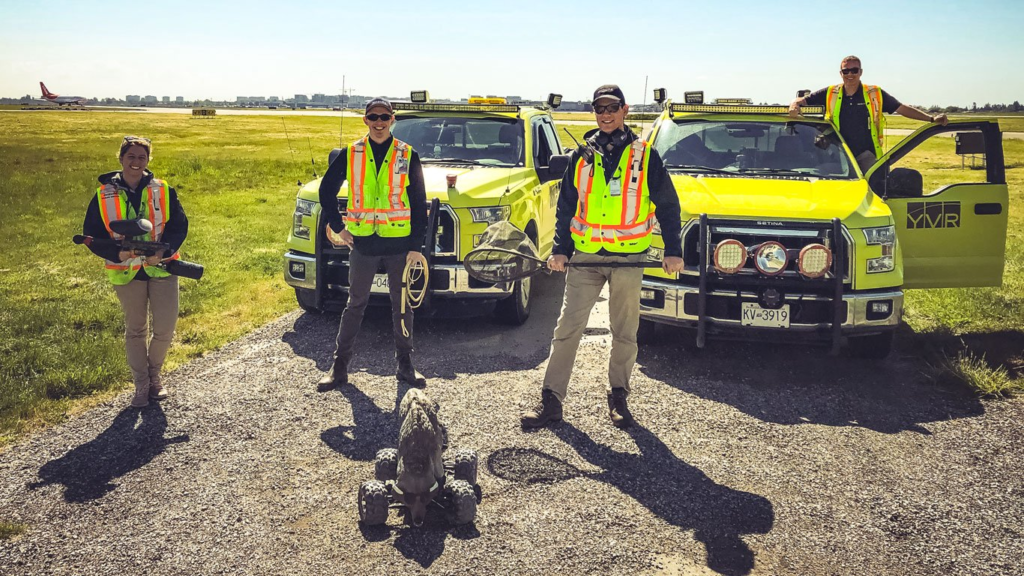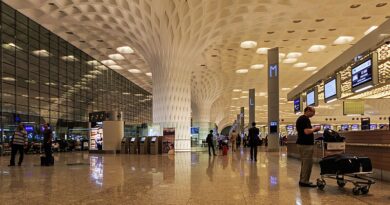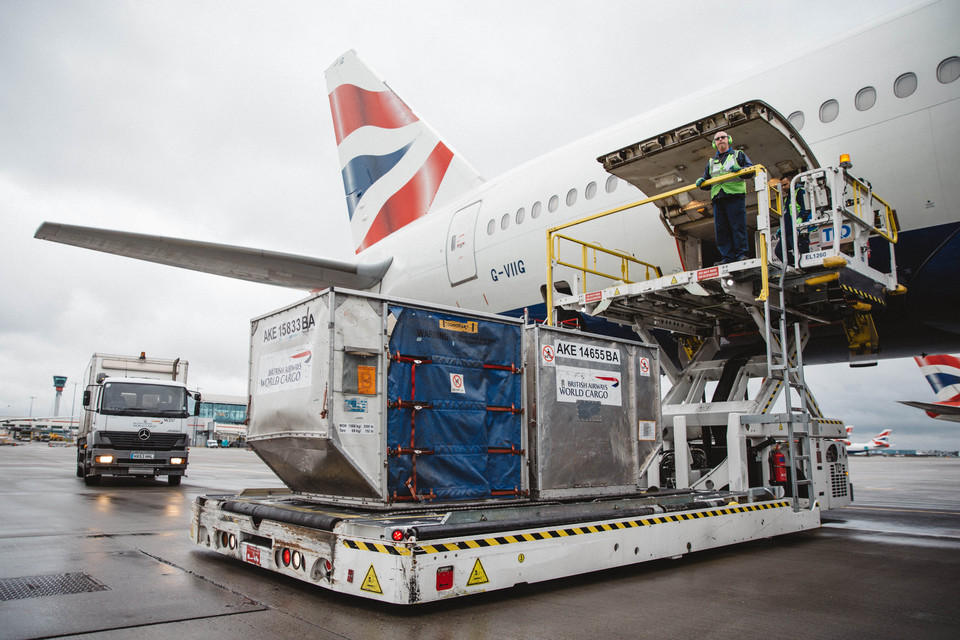Free Airport Wildlife Management Crew Course (6months)
Airport Wildlife Management Crew:

Brief Job Description of Airport Wildlife Management Crew: Airport Wildlife Management Crew is responsible for wildlife hazard planning, hazard assessment and control. He/ She would compile wildlife hazard assessment reports detailing management measures and recommendations for reducing bird and wildlife risk at the airport and use the most appropriate wildlife management techniques including habitat manipulation and lethal control, pyrotechnic or acoustic devices to deal with wildlife at the airport
Personal Attributes: The individual must have good eyesight and sharp reflexes. He should also have qualities of understanding responsibilities and should ability to act on his/her judgment.

Safety and security procedures:
Comprehending the safety and security procedures
PC1. comply with the organization’s safety and security policies and procedures
PC2. comply with the regulatory guidelines on safe conduct of operations and maintenance of conditions to thwart any acts of unlawful interference
PC3. report any identified breaches of safety, and security policies and procedures to the designated person
PC4. coordinate with other resources at the workplace (within and outside the organisation) to achieve safe and secure environment
PC5. identify and mitigate any safety and security hazards like illness, accidents, fires or acts of unlawful interference if it falls within the limits of individual’s authority
PC6. report any hazards outside the individual’s authority to the relevant person in line with organizational procedures and regulatory guidelines
PC7. follow organization’s emergency procedures for accidents, fires or acts of unlawful interference
PC8. identify and recommend opportunities for improving health, safety, and security to the designated person
PC9. ensure all health and safety records are updated and procedures well defined
Knowledge and Understanding

Organizational
Context
KA1. hazard identification and risk management as defined within the organisational policy and procedures
KA2. legislative requirements and organization’s procedures for maintenance of safety and security standards and individual’s role and responsibilities in relation to this
KA3. how and when to report hazards

KA4. the limits of responsibility for dealing with hazards
KA5. the organization’s emergency procedures for different emergency situations and the importance of following these
KA6. the importance of maintaining high standards of safety and security
KA7. implications that any non-compliance with safety and security may have on individuals and the organization
Technical
Knowledge
KB1. different types of breaches of safety and security and how and when to report these
KB2. evacuation procedures for workers and passengers
KB3. how to summon medical assistance and the emergency services, where necessary
KB4. how to use the health, safety and accident reporting procedures and the importance of these
KB5. regulatory guidelines on dealing with safety and security emergencies
Core Skills/ Generic Skills

| Writing Skills |
| The user/ individual on the job needs to know and understand how to: SA1. complete accurate, well written report in English language detailing the situations of emergency with attention to detail |
| Reading Skills |
| The user/individual on the job needs to know and understand how to: SA2. read instructions, guidelines/procedures/rules |
| Oral Communication (Listening and Speaking skills) |
| The user/individual on the job needs to know and understand how to: SA3. listen to and orally communicate information with all concerned |
Professional Skills
| Decision Making |
| The user/individual on the job needs to know and understand how to: SB1. make decisions on a suitable course of action or response if permitted by the authority matrix Plan and Organize The user/individual on the job needs to know and understand: SB2. monitor efficient functioning of all activities SB3. plan and organize work to achieve targets and deadlines Customer Centricity The user/individual on the job needs to know and understand how to: SB4. communicate with customers in a courteous manner SB5. maintain effective relationship with the customers Problem Solving The user/individual on the job needs to know and understand how to: SB6. identify trends/common causes for errors and suggest possible solutions to the supervisor / management SB7. identify and correct errors Analytical Thinking The user/individual on the job needs to know and understand how to: SB8. analyses best possible solutions (cost, time, effort, etc.) suited for operations Critical Thinking The user/individual on the job needs to know and understand how to: SB9. concentrate on task at hand and complete it without errors SB10. apply balanced judgments to different situations Airfield wildlife management and surveillance Performance Criteria Airfield wildlife management and surveillance PC1. perform continuous surveillance throughout operating hours of the airfield surface, surrounding land, and the airspace overhead and immediately around the airfield (normally, those fields immediately adjacent to the perimeter fence and as far as practicable into the runway approach and climb out areas) for hazardous concentrations and movements of wildlife PC2. ensure active dispersal of wildlife from the airfield and its immediate environs by mobile patrols, using the equipment and techniques recommended as best practice in the airport’s internal guidance documentation. PC3. shoot wildlife and remove nests and eggs, where necessary and within the provisions of the national Wildlife Act PC4. warn ATC whenever a potential wildlife hazard cannot be countered immediately or without making the situation worse in the short term PC5. monitor the implementation of the habitat management programme to minimise the attraction of the airfield and its environs for wildlife PC6. gather intelligence, perform record keeping to produce a sound and current background of data on which to monitor and develop the WHCP PC7. record wildlife strikes using the appropriate documentation channels. As part of the role the crew will be trained in identification from remains as well as local and national birdstrike reporting procedures PC8. record, and inform the regulators, of all developments with potential to affect the efficient performance of the wildlife control task PC9. comply with the regulations for operating on movement areas, driving, health and safety, civil laws affecting the task, and ensure that personal permits and certificates required to perform the task are kept up to date PC10. assist with control/dispersal action as necessary at breeding, feeding or roosting sites on and off the airfield Organizational Context KA1. relevant procedures and policies of organization KA2. procedure to inform ATC about any hazardous activity on runway Technical Knowledge KB1. principles, theories, methods and techniques of natural resources management and environmental protection KB2. international, state and local laws, regulations and court decisions applicable to assigned areas of responsibility KB3. principles and practices of sound business communication KB4. to collect, evaluate and interpret appropriate and applicable data, either in statistical or narrative form KB5. to understand, interpret, explain and apply laws, regulations, ordinances and policies applicable to assigned program responsibilities KB6. interpret and respond to internal and external customer needs and expectations KB7. to prepare clear, concise and comprehensive reports, correspondence and other documents appropriate to the audience KB8. to communicate effectively orally and in writing KB9. to maintain all required files, records and documentation KB10. to establish and maintain effective working relationships with those encountered in the course of work. Core Skills/ Generic Skills Writing Skills The user/ individual on the job needs to know and understand how to: SA1. collect, evaluate and interpret appropriate and applicable data, either in statistical or narrative form SA2. prepare clear, concise and comprehensive reports SA3. maintain all required files, records and documentation Reading Skills The user/individual on the job needs to know and understand how to: SA4. read and follow the instructions carefully Oral Communication (Listening and Speaking skills) The user/individual on the job needs to know and understand how to: SA5. communicate clearly with supervisor and peers SA6. regularly communicate with all employees in the chain of activities to ensure activities are running smoothly SA7. share best practices with peers and juniors Professional Skills Decision Making Not applicable Plan and Organize The user/individual on the job needs to know and understand: SB3. monitor smooth functioning of all activities SB4. prioritise and execute tasks in within the schedule time limits Customer Centricity Not applicable Problem Solving: The user/individual on the job need to know and understand: SB5. identify trends/ common causes for errors and suggest possible solutions to the supervisor/ management SB6. identify and correct errors Analytical Skills The user/individual on the job needs to know and understand how to: SB7. analyse on best possible solution (cost, time, effort, etc) suited for customer requirement Critical Thinking Skills The user/individual on the job needs to know and understand how to: SB8. concentrate on task at hand and complete it without errors Model Curriculum Airport Wildlife Management Crew safety and security procedures comply with the organization’s safety and security policies and procedures comply with the regulatory guidelines on safe conduct of operations and maintenance of condi tions to thwart any acts of unlawful interference report any identified breaches of safety, and security policies and procedures to the designated person coordinate with other resources at the workplace (within and outside the organization) to achieve safe and secure environment identify and mitigate any safety and security hazards like illness, accidents, fires or acts of unlawful interference if it falls within the limits of individual’s authority report any hazards outside the individual’s authority to the relevant person in line with organizational procedures and regulatory guidelines follow organization’s emergency procedures for accidents, fires or acts of unlawful interference identify and recommend opportunities for improving health, safety, and security to the designated person ensure all health and safety records are updated and procedures well defined Airfield wildlife management and surveillance perform continuous surveillance throughout operating hours of the airfield surface, surrounding land, and the airspace overhead and immediately around the airfield (normally, those fields immediately adjacent to the perimeter fence and as far as practicable into the runway approach and climbout areas) for hazardous concentrations and movements of wildlife ensure active dispersal of wildlife from the airfield and its immediate environs by mobile patrols, using the equipment and techniques recommended as best practice in the airport’s internal guidance documentation. shoot wildlife and remove nests and eggs, where necessary and within the provisions of the national Wildlife Act warn ATC whenever a potential wildlife hazard cannot be countered immediately or without making the situation worse in the short term monitor the implementation of the habitat management programme to minimise the attraction of the airfield and its environs for wildlife gather intelligence, perform record keeping to produce a sound and current background of data on which to monitor and develop the WHCP record wildlife strikes using the appropriate documentation channels. As part of the role the crew will be trained in identification from remains as well as local and national birdstrike reporting procedures record, and inform the regulators, of all developments with potential to affect the efficient performance of the wildlife control task comply with the regulations for operating on movement areas, driving, health and safety, civil laws affecting the task, and ensure that personal permits and certificates required to perform the task are kept up to date assist with control/dispersal action as necessary at breeding, feeding or roosting sites on and off the airfield Guidelines for Assessment:- Criteria for assessment for each Qualification Pack will be created by the Sector Skill Council. Each Performance Criteria (PC) will be assigned marks proportional to its importance in NOS. SSC will also lay down proportion of marks for Theory and Skills Practical for each PC The assessment for the theory part will be based on knowledge bank of questions created by the SSC Individual assessment agencies will create unique question papers for theory part for each candidate at each examination/training center (as per assessment criteria below Individual assessment agencies will create unique evaluations for skill practical for every student at each examination/training center based on this criteria To pass the Qualification Pack, every trainee should score a minimum of 60% in aggregate The marks are allocated PC wise, however, every NOS will carry a weightage in the total marks allocated to the specific QP. |








